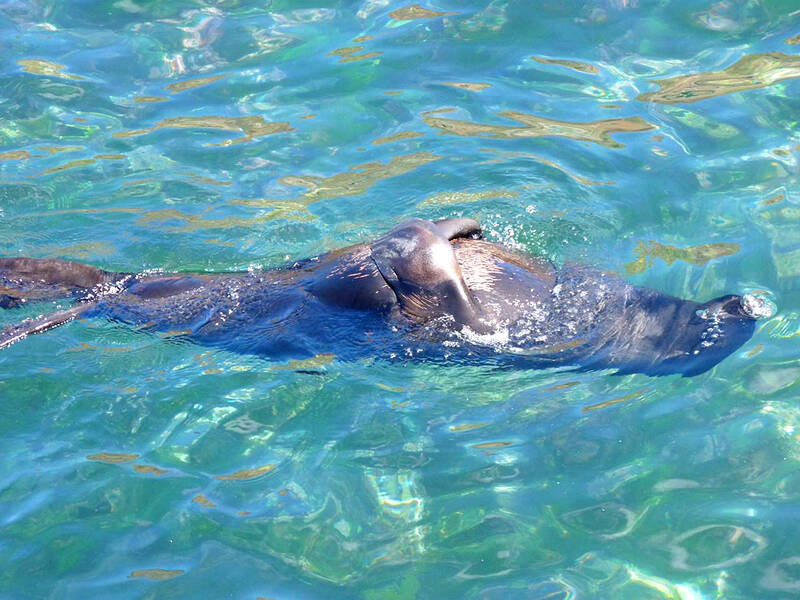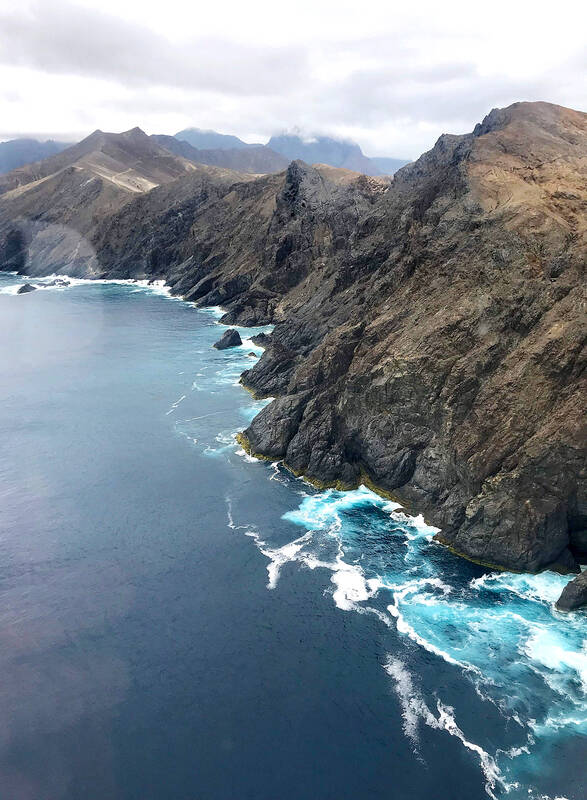A creature that humans came very close to obliterating now offers hope that we may be able to find ways to tackle one of the most pernicious environmental poisons, say scientists.
Their research has revealed that one of the world’s most isolated aquatic mammals, Arctocephalus philippii, can tolerate high levels of cadmium, as well as other metallic pollutants without suffering ill effects.
A. philippii is the second smallest species of fur seal and lives only on the Juan Fernandez archipelago and one or two nearby islands in the Pacific Ocean, hundreds of miles off the coast of Chile. It was here that sailor Alexander Selkirk was marooned from 1704 to 1709, an experience that was fictionalized by Daniel Defoe in Robinson Crusoe — after whom the archipelago’s main island is now named.

Photo courtesy of Patricio Novoa Quezada
In the early 18th century, the shores of Robinson Crusoe island teemed with Juan Fernandez seals. However, the animals were hunted for their fur and meat with such vigor that around 4 million are now thought to have been slaughtered. By the 19th century, the species had disappeared and was believed to be extinct until, in the 1960s, a small colony was found in a cave on the island.
Since then, the Juan Fernandez seal, which has become a protected species, has slowly recovered and has a population of around 80,000 living on the island’s rocky shores, according to the most recent figures. Adults forage at sea while pups are born in November and December with soft black fur that fades to light brown in a few years.
Little else was known about the seal’s detailed biology until scientists began studying it in detail recently — making some startling discoveries in the process.

Photo: AFP
“We collected samples of their feces and found they contained extremely high levels of cadmium and other elements such as mercury,” Constanza Toro-Valdivieso of Cambridge University’s conservation research institute said.
“The discovery was very surprising,” she added. “Cadmium is poisonous to mammals but somehow these seals were processing it and passing it through their digestive systems and seem to be suffering little harm in the process.”
Apart from the seals’ unexpected ability to tolerate high levels of cadmium, there was also a puzzle about its source.
“The soil on the island is low in cadmium and so is the water around it,” Toro-Valdivieso said. “So where was the cadmium coming from?”
The answer appears to be that it probably came from food the seals ate, scientists concluded. Some species of seal, like the Antarctic fur seal, have a diet rich in krill which they catch locally. However, Juan Fernandez seals eat lots of squid and fish, and females are known to travel up to 500km to catch their prey. In doing so, the seals would have to travel through the South Pacific gyre, a huge, rotating ocean current in which all sorts of debris gets trapped.
“It is here they are most likely to come in contact with cadmium,” Toro-Valdivieso, who has been studying the species for several years, said.
The debris swept into the gyre includes man-made polymers containing cadmium, it is speculated, and this is being picked up by fish and squid and then ingested by the seals.
“That is the most likely the source of the cadmium,” Toro-Valdivieso whose team has just published a paper on their research in Royal Society Open Science, said.
However, identifying the source does not explain how the Juan Fernandez fur seal manages to shield itself from ingesting a substance so poisonous to other mammals. High levels were found not only in its feces but in the bones of seals that had died of natural causes. The researchers also found high levels of silicon in their bones, which may be offsetting the impact of cadmium, they suggest.
“The discovery that these animals appear to tolerate high levels of cadmium in their bodies has important medical implications, and it is very important for us to find out exactly how the Juan Fernandez seal achieves this,” Toro-Valdivieso said. “It could be something to do with the animal’s genes or something else completely. It is an issue that we are hoping to follow up over the coming years.
“These animals have a lot to tell us.”

In Taiwan there are two economies: the shiny high tech export economy epitomized by Taiwan Semiconductor Manufacturing Co (TSMC, 台積電) and its outsized effect on global supply chains, and the domestic economy, driven by construction and powered by flows of gravel, sand and government contracts. The latter supports the former: we can have an economy without TSMC, but we can’t have one without construction. The labor shortage has heavily impacted public construction in Taiwan. For example, the first phase of the MRT Wanda Line in Taipei, originally slated for next year, has been pushed back to 2027. The government

July 22 to July 28 The Love River’s (愛河) four-decade run as the host of Kaohsiung’s annual dragon boat races came to an abrupt end in 1971 — the once pristine waterway had become too polluted. The 1970 event was infamous for the putrid stench permeating the air, exacerbated by contestants splashing water and sludge onto the shore and even the onlookers. The relocation of the festivities officially marked the “death” of the river, whose condition had rapidly deteriorated during the previous decade. The myriad factories upstream were only partly to blame; as Kaohsiung’s population boomed in the 1960s, all household

Allegations of corruption against three heavyweight politicians from the three major parties are big in the news now. On Wednesday, prosecutors indicted Hsinchu County Commissioner Yang Wen-ke (楊文科) of the Chinese Nationalist Party (KMT), a judgment is expected this week in the case involving Hsinchu Mayor Ann Kao (高虹安) of the Taiwan People’s Party (TPP) and former deputy premier and Taoyuan Mayor Cheng Wen-tsan (鄭文燦) of the Democratic Progressive Party (DPP) is being held incommunicado in prison. Unlike the other two cases, Cheng’s case has generated considerable speculation, rumors, suspicions and conspiracy theories from both the pan-blue and pan-green camps.

Stepping inside Waley Art (水谷藝術) in Taipei’s historic Wanhua District (萬華區) one leaves the motorcycle growl and air-conditioner purr of the street and enters a very different sonic realm. Speakers hiss, machines whir and objects chime from all five floors of the shophouse-turned- contemporary art gallery (including the basement). “It’s a bit of a metaphor, the stacking of gallery floors is like the layering of sounds,” observes Australian conceptual artist Samuel Beilby, whose audio installation HZ & Machinic Paragenesis occupies the ground floor of the gallery space. He’s not wrong. Put ‘em in a Box (我們把它都裝在一個盒子裡), which runs until Aug. 18, invites